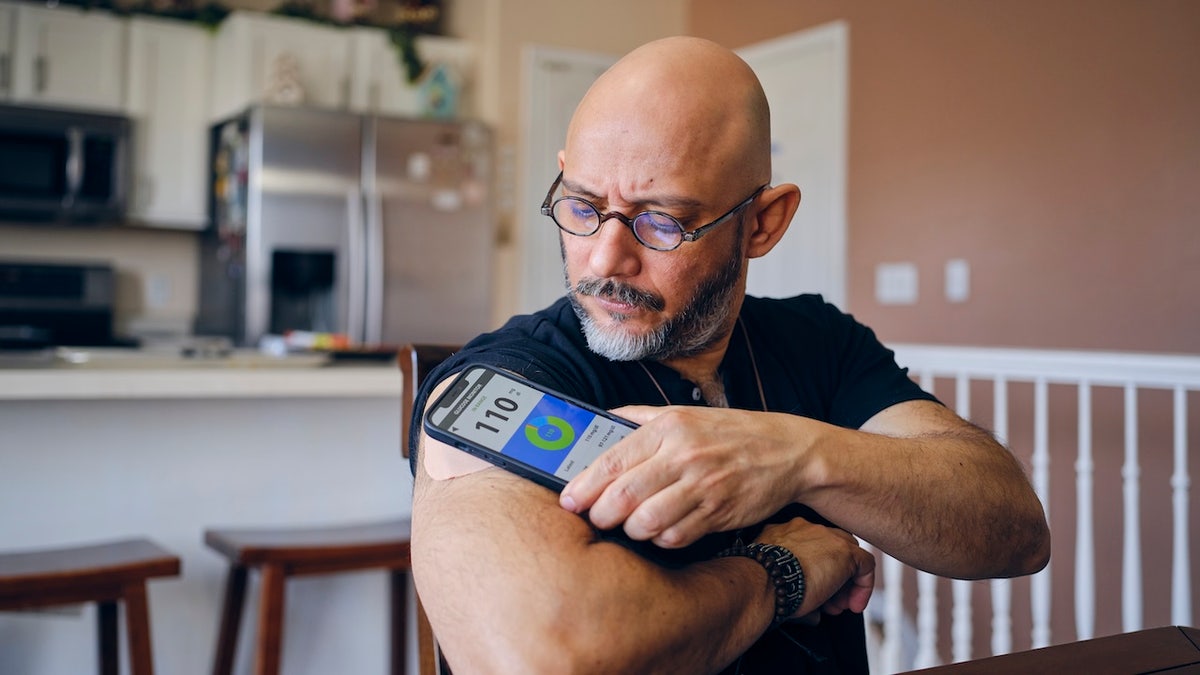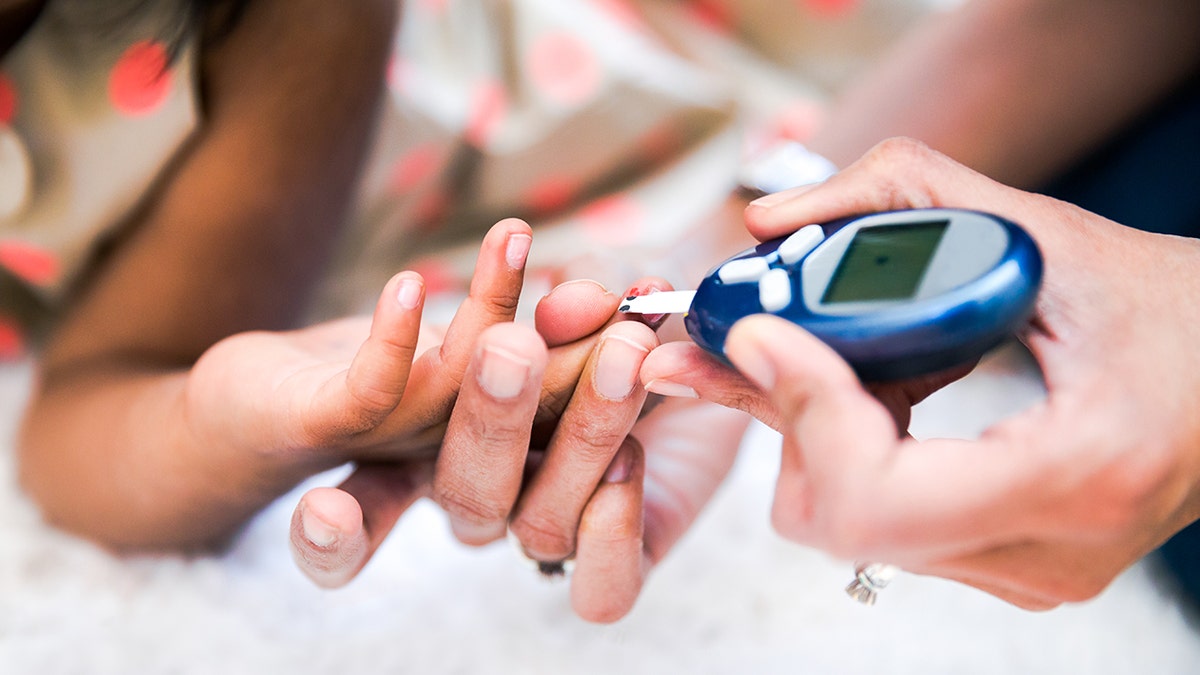

More than 588 million American adults are currently living with diabetes, the latest data shows — and between 90% and 95% of those cases are type 2 diabetes.
Type 1 diabetes, although it only makes up 5% to 10% of cases, is also well-known.
But researchers now claim that a lesser-known variation — type 5 diabetes, or malnutrition-related diabetes mellitus (MRDM) — warrants its own designation and treatment.
HOW TO REVERSE PREDIABETES BEFORE IT LEADS TO TYPE 2 DIABETES
Type 2 diabetes is more common among adults, but can appear in children. The disease is linked to family history, age, obesity and unhealthy lifestyle factors, according to the Centers for Disease Control and Prevention.

More than 588 million American adults are currently living with diabetes — and between 90% and 95% of those cases are type 2 diabetes. (iStock)
"Type 2 diabetes is caused by insulin resistance, which is caused by someone eating a diet high in sugars and carbs for decades, where the body perceives its own insulin as foreign and therefore resists it," Dr. Jeffrey Hockings, founder and CEO of Diabetes Reversal Group in Texas, told Fox News Digital.
"This causes the blood sugar to stay high, requiring oral medications or insulin to bring the blood sugar down."
Type 2 diabetes is reversible with proper lifestyle changes, the doctor noted.
NO MORE INJECTIONS? NEW PILL COULD REPLACE OZEMPIC AND WEGOVY FOR WEIGHT LOSS
With type 1 diabetes, the patient experiences a metabolic condition where the body becomes resistant to insulin or doesn’t make enough of it, per the CDC. The condition is not reversible.
"Type 1 diabetes is juvenile diabetes, caused by a genetic issue and/or autoimmune disease, where the pancreas isn't producing enough insulin," Hocking said. "Patients need to take insulin shots daily or with a pump for the rest of their lives."

Researchers claim that a lesser-known variation — type 5 diabetes, or malnutrition-related diabetes mellitus (MRDM) — warrants its own designation and treatment. (iStock)
Although this form of the disease is more likely to be diagnosed in children, teens and young adults, adults can also get it, per the CDC.
(There are also two other established types of the disease — type 3c and gestational diabetes. Type 3c is caused by chronic pancreatitis and pancreatic cancer, while gestational diabetes can affect women during pregnancy.)
Type 5 diabetes, or MRDM, is the result of "chronic undernutrition and health disparities," according to the International Diabetes Federation (IDF).
Common symptoms include significant weight loss, feelings of fatigue and heightened vulnerability to infections, as well as frequent urination and excessive thirst.
DIABETES RISK QUADRUPLES WITH USE OF POPULAR NATURAL REMEDY, STUDY FINDS
"Type 5 diabetes is known to develop in people with a low BMI who were chronically malnourished during development and adulthood — and as a result, the pancreas underproduces insulin," Tanya Freirich, a registered dietitian nutritionist in Charlotte, North Carolina, who specializes in diabetes, told Fox News Digital.
"However, those people do not share the same insulin resistance as people diagnosed with type 2 diabetes."
While type 5 diabetes shares characteristics with type 1 and 2 diabetes, it has enough unique characteristics to warrant a different diagnosis, according to Freirich.

"Type 1 diabetes is juvenile diabetes, caused by a genetic issue and/or autoimmune disease, where the pancreas isn't producing enough insulin," an expert said. (iStock)
In January 2025, MRDM was "formally classified" as type 5 diabetes at an international meeting of experts in India, IDF noted.
Then, in April 2025, type 5 diabetes was officially recognized at the IDF World Diabetes Congress 2025 in Bangkok.
As part of this recognition, IDF President Peter Schwarz publicly announced the launch of a type 5 diabetes working group, designed to help define the diagnostic criteria and treatments for this form of the disease.
Even so, there has been debate in the medical community about whether type 5 diabetes warrants its own separate category, according to Dr. Bronwyn Holmes, M.D., a board-certified physician on Eden’s Medical Advisory Board in New York.
"Type 5 diabetes is known to develop in people with a low BMI who were chronically malnourished during development and adulthood."
"The distinct biological mechanisms and public health significance and unique clinical presentation of type 5 diabetes justify its separate classification," she said in an interview with Fox News Digital.
However, type 5 has not been formally recognized by the American Diabetes Association or the World Health Organization.
Diagnosis of type 5 diabetes involves assessing a history of malnutrition, low BMI and age under 30 at diagnosis, according to Hockings. Blood glucose tests are used to confirm the disease.
"Treatment focuses on nutritional rehabilitation to correct deficiencies and improve pancreatic function," Hockings told Fox News Digital. "While some may require insulin, the dosage must be carefully controlled to avoid dangerously low blood sugar levels."
Oral medications and a high-protein diet are also part of the management plan, according to the doctor.

Anyone experiencing symptoms of type 5 or any form of diabetes should consult a qualified healthcare professional to receive testing, diagnosis and a treatment plan. (iStock)
Freirich noted that treatment should take into account the metabolic differences found in type 5 diabetes.
"For example, people with type 5 diabetes are more prone to low blood sugars due to their insulin sensitivity and ability to make some insulin," she said. "The appropriate diet can be helpful in addressing malnutrition as well as ensuring that blood sugars remain in the optimal range."
For more Health articles, visit www.foxnews.com/health
Anyone experiencing symptoms of type 5 or any form of diabetes should consult a qualified healthcare professional to receive testing, diagnosis and a treatment plan.
